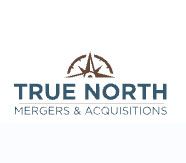The 5 Most Common Mistakes Companies Make During Mergers & Acquisitions

True North Mergers & Acquisitions
November 14, 2023

Whether you're selling your business, buying out a competitor, or joining forces with another company, the merger and acquisition (M&A) process is fraught with potential pitfalls that can turn a bold move into an expensive lesson. But you can only sidestep common blunders once you know what they are. That's exactly why we've compiled a list of the five most common mistakes companies make during mergers & acquisitions.
Not Having a Due Diligence Plan
Navigating an M&A without due diligence means you’re building without a blueprint. Don’t do it. You must have a due diligence plan that answers every possible question about the target company. Include these critical components in your due diligence plan:
Financial: Examine the financial records of the target company—past revenue, profit margins, cash flow, debt, and projections.
Legal: Uncover the potential legal risks by reviewing contracts, ongoing (or possible) litigation, compliance, intellectual property issues, etc.
Operational: Evaluate the efficiency and effectiveness of the company’s systems, management, and culture.
Fit: Determine whether the target company’s values, culture, strategic goals and long-term objectives align with yours.
Technology: Does the target have a solid, efficient, compliant IT infrastructure? How does it manage data and manage potential security issues?
It’s worth noting that this is not an exhaustive list of every component that should appear in your due diligence plan. It’s simply a jumping-off point.
Not Identifying Potential Culture Clashes
Cultural fit is critical in the M&A process. Look beyond policies and practices. Analyze the target's workplace culture, leadership styles, employee engagement, and communication patterns.
While you must acknowledge (and respect) different organizations' cultures, do not ignore those that may disrupt your own.
Get Professional Help
Venturing into an M&A alone may save you money in the short term—but it leaves you vulnerable to your own blindspots. M&A professionals have the experience to value a business accurately. Their extensive network also gives you access to buyers and sellers you may have no connection to. They can also help you manage the due diligence process, address potential issues early on, and sidestep costly mistakes.
Don’t go it alone. Lean on a trusted M&A advisor.
Overspending
Overpaying for a target company is another critical M&A mistake. To avoid overspending, move beyond market benchmarking. Use multiple valuation methods, including DCF, comparables analysis, and precedent transactions.
Comparing these methods provides a range of values and ensures you're not basing your purchase price on a single, potentially skewed metric.
Just as important, set an upper limit before negotiations start. Determine the maximum price you'll pay based on your valuation and stick to it.
Not Doing a Strengths, Weaknesses, Opportunities, Threats (SWOT) Analysis
A SWOT analysis will reveal critical insights about the target company that may not be apparent through financial due diligence alone. Understand the target company’s strengths, weaknesses, untapped opportunities, and any regulatory changes or economic shifts that could derail the M&A.
Merge with Confidence: True North's Expert M&A Guidance
At True North Mergers & Acquisitions, we're committed to guiding you through a seamless M&A process tailored to your business needs and personal goals. If you're gearing up for the future and need strategic insights to help you navigate, contact us now. Your first step toward a successful merger or acquisition starts here.
Subscribe to our Newsletter
Sign up for the latest industry insights from True North Mergers & Acquisitions.




